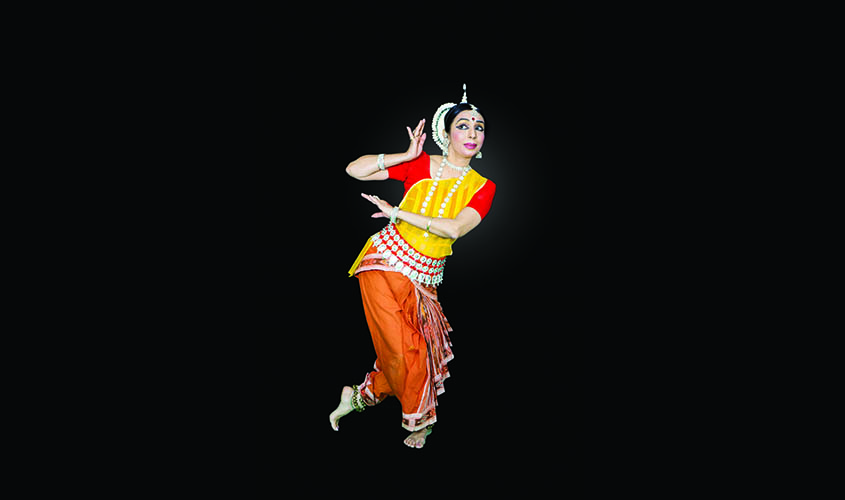Dancer and choreographer Sharmila Mukerjee speaks to Nivedita Singh about the aesthetic appeal of Odissi, a dance form she has mastered over the years and popularised around the world.
Q. What exactly made you take up Odissi as your career? Was it the setting you grew up in, parental influence or the influence of your peers?
A. I took up the Uday Shankar style of dance when I was a child. And Odissi seemed closest to it as it was graceful and lyrical. Watching a performance by Protima Bedi in Kolkata, accompanied on the pakhawaj by Guruji [Kelucharan Mohapatra], made me decide to take up Odissi as my career. There was a tremendous energy about Guruji which emanated from the stage to the audience and I knew I only wanted to learn from him.
Q. How difficult was it for you to make your passion your profession?
A. One has to have passion for something, in order to take it up as a profession. Things get extremely difficult without passion, as this path is initially full of struggles—financial, physical and emotional. One is prepared to tide over all kinds of stress and struggles if one has passion for an art form.
Q. How do you look back on the work you have done in setting up the Sanjali Dance Centre in Bangalore for Indian and foreign students?
A. The journey has been full of ups and downs as all journeys are. Initially, I started in Kolkata and moved to Bangalore in 2004. Since there was hardly any Odissi in that city, it [the centre] became very popular and students flocked from very far to learn from me at Sanjali, since Guru Kelucharan Mohapatra was already well-known and I was his direct disciple. The journey after that was to set up Sanjali as a proper dance school and expand nationally and internationally.
Q. How do artists cope with a life full of struggles?
A. It’s a journey full of struggles and sometimes frustration. However, one has to keep at it and not give up. I have become a much stronger person and can take any obstacles in my stride.
Q. Is dance a spiritual experience?
A. Yes, most definitely. It is spiritually uplifting if one is true to the art.
Q. Tell us about the performance you consider your best to date?
A. My Rangapravesh in 1989. It was a full two-hour margam, accompanied on the pakhawaj by Guruji himself. I consider that my best performance.
Q. What are the most important things an Odissi dancer has to pay attention to before a show?
A. A lot of practice must precede a solo performance. The challenge is to hold the audience’s attention. Items must be chosen carefully depending on the occasion. The aesthetics are very important. Explaining the dance is very important, too .The entire show, from the entry to the last piece, is important—and this should include compering, too, if we are talking about a show in totality. Doing a group programme has more challenges. One has to pay attention to the entire choreography, lighting, costumes and synchronisation. Everything should be aesthetically appealing.
Q. Would you like to tell us about how you have been trying to popularise Odissi both in India and abroad?
A. When I first delivered a lecture-demonstration on Odissi at the University of Michigan in the fall of 2000, many in the audience were not aware of Odissi dance. Many thought film dance or Bollywood was Indian culture. The university was impressed to see something so different and beautiful. That was when I realised Indian classical dance and especially Odissi needed more exposure abroad.
I teach a lot of foreign students and encourage a lot of my students to perform abroad, as long as they practice and showcase the authentic style.
Q. How was your experience of learning under the guidance of Guru Kelucharan Mohapatra?
A. Guruji was a hard taskmaster. It was an honour to be in his class and be noticed by him. He had a positive energy and I always strove and worked hard to impress him. He was brilliant and creative and we, his direct disciples, were fortunate to see and be part of his creative process. He was a perfectionist. I could not imagine learning Odissi from any other guru.
Q. What would your advice be for anyone thinking of building a career in Odissi or in any other creative field?
A. I would recommend taking Odissi up as a profession because I love it and I am passionate about it. Whoever is passionate about an art form should take it up as a profession, being fully aware of the challenges ahead. Challenges are there in every profession and must be overcome, by staying positive and working hard, no matter what. The spiritual and creative satisfaction one gets eventually makes the challenges seem negligible anyway.
Q. What do you think about contemporary dance forms popular in India?
A. I think contemporary dancers are all coming up with new ideas and experiments which are opening up a whole new world in this field. Today, dancers are fortunate to have social media to reach out to larger audiences. Different and innovative works, if done well, will always have an impact and many contemporary dancers are doing that. The field is also much more competitive today, which makes it exciting and gives a new reason for dancers to stay motivated and work harder with new ideas and themes.

